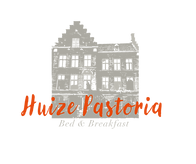A piece of history
Stepped gables have become internationally known as the graceful highlights of canal houses, especially in Amsterdam. The fact that such a proud stepped gable can also be admired in the Zoeterwoude polder landscape is thanks to pastor WJ van Grossel. In 1879 he had this former parsonage built. Apparently, the reverend had a rather high opinion of himself, because he stood on the stepped gables, to give the enormous building allure.

He was not thanked for it. As punishment, less than a year later, Van Grossel was transferred to a small parish in Amsterdam. Not only was the building much too big and expensive, it was also in the wrong place according to the bishop. The Catholic Church ultimately wanted to move towards the actual village of Zoeterwoude.
The fact that St. John's Beheading is where it is has a long history. After the Reformation in the sixteenth century, the Protestant faith became dominant. Anyone who still dared to be Catholic in the Netherlands secretly met in so-called clandestine churches. The one in Zoeterwoude was located at this spot, more than a kilometer outside the village center.
When the relations were normalized again, a Waterstaat church was built here in 1844. It was so-called because the Ministry of Water Management had to grant permission. The first pastor, Everardus van Haagen, could also call himself archpriest and was thus the most important clergyman in the western Netherlands. By the time pastor Van Grossel took office, the relations were already different.
But we owe Huize Pastoria to him!
In 1970, the Christus Dienaarkerk was built in the middle of the village. But the Sint Janskerk has always retained its function. In the same period, the hamlet of Zuidbuurt was built near the church. Further on, more hamlets use the Sint Jan. The centuries-old church paths bear witness to this.
But the secularization that then began, presented the parish council with a choice a few years ago. It was decided to demolish the Christus Dienaarkerk, so that the Sint Jan would once again become the church center of Zoeterwoude and its surroundings. With the sale of the rectory, the interior could be renovated.
To make use of the enormous space, the new residents of Zuidbuurtseweg 14 decided to set up a B&B. In doing so, they are also following a tradition. In many places in the Netherlands, old parsonages function as B&Bs. That is not so strange. B&Bs distinguish themselves from hotels because they have a story to tell. And Huize Pastoria also has a story to tell.
